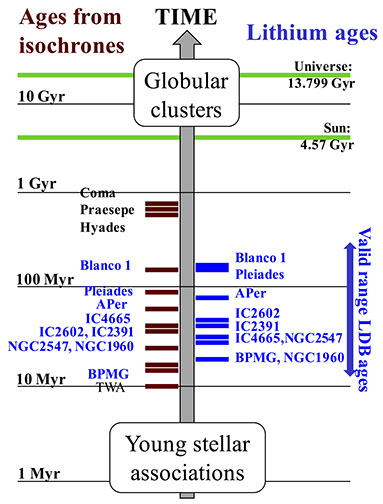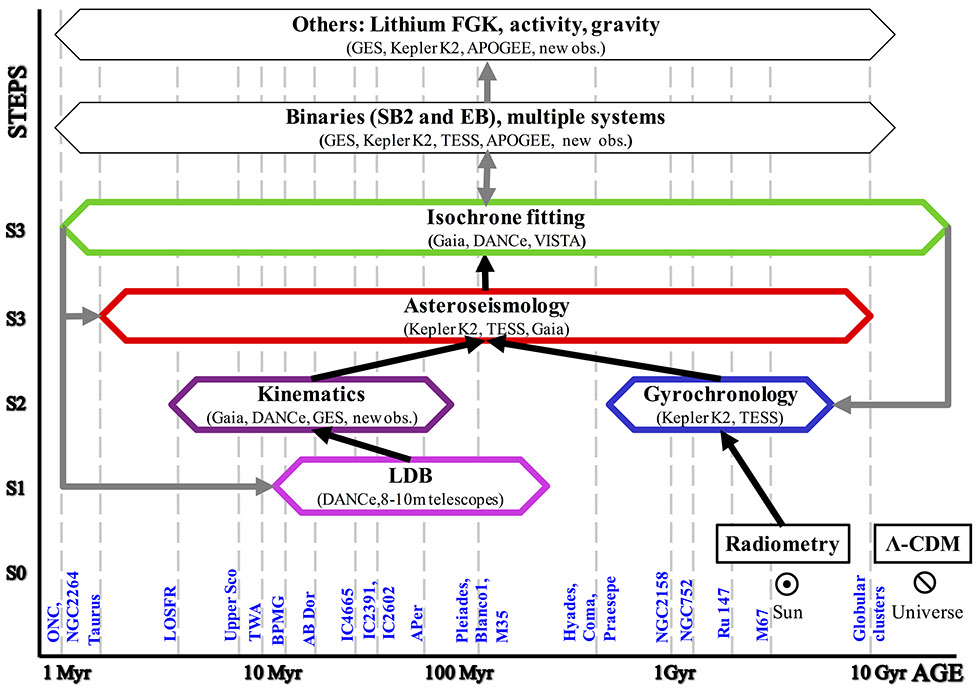The age is unarguably the most fundamental parameter of any astrophysical object. It is key to truly understand a large plethora of phenomena, from stars and planets to galaxies. However, our age scales are tied to only two anchors, the age of the sun and of the universe. Moreover, different techniques produce values with differences up to 50% (see Fig. on the right). The main culprit for this state of affairs is the lack of a universal age scale and the absence of a systematic and robust cross-calibration of the various dating methods.
The goal of the CHRONOS project is to deliverer a complete, coherent and accurate method to estimate the age of stars and stellar associations over the entire time domain. In addition, we will apply modern Bayesian statistics and Markov Chain Monte Carlo techniques to explore all parameter spaces and perform a statistically rigorous and complete analysis of error propagation. We will use several massive database (Gaia, COSMIC-DANCe, Kepler, Gaia-ESO) and the latest theoretical models in order to define an age stairway.

© D. Barrado
Open clusters and associations will be key in this effort and we will start with the simplest, least model dependant techniques. Thus, we will start with our two anchors, and build up sequentially starting from first principles, observations and simple and well understood physical phenomena such as the Lithium Depletion Boundary and kinematics. These will then be used to bridge the gaps and anchor other precise but relative or model-dependent age scales such as the gyrochronology and asteroseismology to make the ultimate self-consistent universal age scale covering the entire astrophysical time domain. At each step, we will re-analyze the different age scales and evaluate data and models from a holistic perspective, using modern statistical tools to estimate realistic uncertainties and build the most accurate (in a statistical sense) universal age-scale. Thus, we expect that the results of this proposal will be essential to define the ultimate cosmological clock.

© D. Barrado
© Last Update: 31-08-2016 by D. Barrado